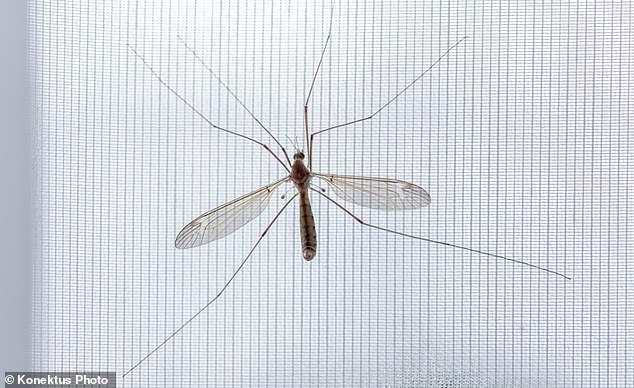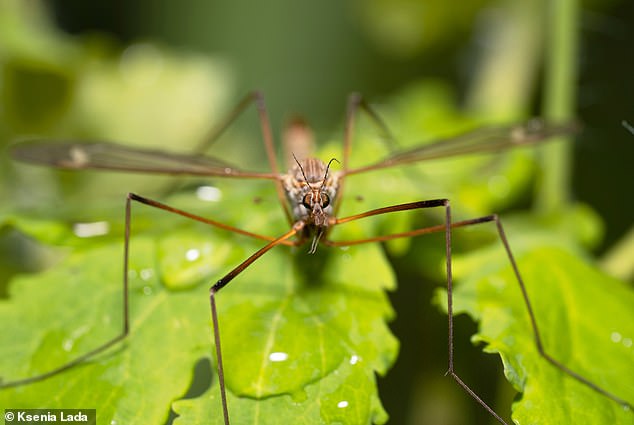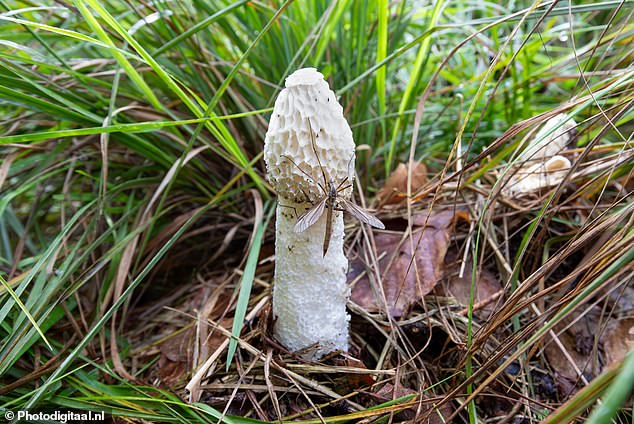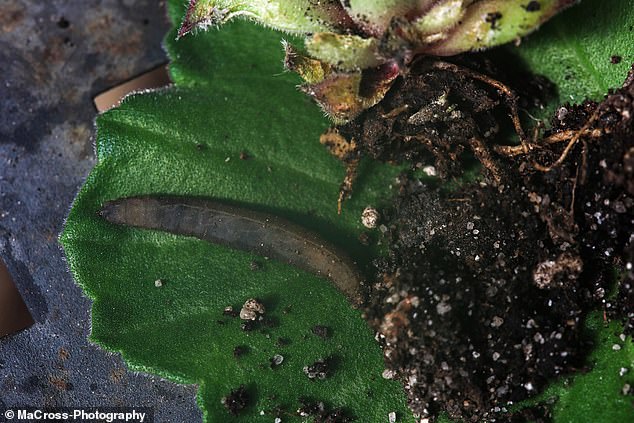Revenge of the daddy long legs: Experts warn the creepy crawlies are invading UK homes – here’s how to keep your house free of them
>
If you’ve noticed a flock of daddy’s long legs in your home in recent weeks, you’re not alone.
Known for crashing into our walls and ceilings, this strange-looking winged creature is abundant at this time of year.
That’s because the amorous insect – described by one expert as a “sex machine” – frantically stalks a mate before it dies.
However, scientists maintain that daddy longlegs are harmless and do not bite – and they stress that the claim that they have powerful venom is just a myth.
Daddy’s often have long legs Confused by The spider of the same name, which will quickly bounce and vibrate its web to try to ward off threats.

Daddy longlegs only have a few days to reproduce before they die – and they accidentally enter our homes around this time of year while searching for mates.
According to Professor Jim Hardy of the Royal Entomological Society, there are 327 species of long-legged flies (also known as crane flies) in the UK.
But the most common – and the one we’ve all likely found crashing into the walls of our homes – is called Tibula palludusa.
‘Adults emerge from cocoons during late summer, August, September and October, and they can do so in large numbers,’ Professor Hardy told MailOnline.
“That’s why they enter homes at this time of year, but it’s incidental – their main understanding is to look for mates.”
Adults only have about two weeks or less to live, and during this time they have only one goal.
Paul Hetherington, an expert at the nature conservation charity BugLife, described the species as a “sex machine” because the adult’s role is “solely to mate, lay eggs and therefore reproduce”.
He told MailOnline: ‘This short lifespan means that the vast majority of crane flies emerge at around the same time, making it easier to find a mate.’

The most common type of crane fly in the UK is – and the one we’re all likely to find crashing into the walls of our homes – called Tipula paludosa (pictured)
After mating, females lay up to 300 eggs in moist soil near plants, which hatch after about two weeks and become larvae, referred to as “leatherjackets.”
The larva feeds through the rest of the fall, hibernates in the winter, feeds again in the spring and summer, then becomes an adult in the fall – and the life cycle repeats again.
Adults rarely feed on anything because their goal is to focus on mating and, for females, laying their eggs in the grass.
Although dangling legs look terrible, they add stability in flight, confuse predators and act like “whiskers” to sense danger.
Locking doors and windows is the best tip to keep leggy daddies out of the house, but if they do get inside, it won’t be a big deal.
Dr Duncan Civil, a fly expert and curator at the National History Museum in London, said daddy’s long legs were “completely harmless”.
He told MailOnline: ‘I understand that people may not like such a large insect flying through their homes, but there is nothing to worry about.’
“If you want to get rid of one quickly, you can try a jam jar and a piece of paper, then release them outside.
“You can take a more direct approach and pick them up from one of the wings and carry them out.

Close-up of a female crane fly (Tipula paludosa) on a stinkhorn fungus common in grass

The larvae, known as the leatherjacket, is a gray grub that lives underground, feeding on the stems and roots of plants. Adults rarely feed
“Do not try to catch them by their legs, as they are designed to fall and the crane fly will escape.”
“If you want to get rid of it but aren’t in a rush, you can leave the windows open and turn off the lights, and in the morning the light from outside should pull the crane out again.”
Daddy’s long legs will be of most concern to proud gardeners because the caterpillar feeds on roots in the soil including grass roots, damaging lawns.
According to the Royal Horticultural Society, a common way to kill caterpillars is to use nematodes – small roundworms that can be sprinkled on the soil.
However, Natalie Bungay, an expert at the British Pest Control Association, said: “During their time as larvae, crane flies are important for recycling and decomposition.

Long-legged crane flies are harmless and can even be seen affectionately by members of the public
“They eat leaves, plants, and small pieces of organic matter in the soil or bodies of water in which they live, so leave them alone if you can.”
According to Dr. Civil at the National History Museum, Tracking the abundance of crane flies in Britain has been difficult, so there is not much data on whether fly numbers are increasing or decreasing from year to year.
“Recording schemes are run by volunteers, and most of the data we have on British insects has been collected voluntarily,” he said.
“People who study these flies will say anecdotally that there has been a general decline over the years.
“Hard data is hard to come by, but since the overall insect population trend is downward in Britain, there is no reason not to believe experts when they say there are fewer crane flies than they used to be.”
(Tags for translation) Daily Mail
